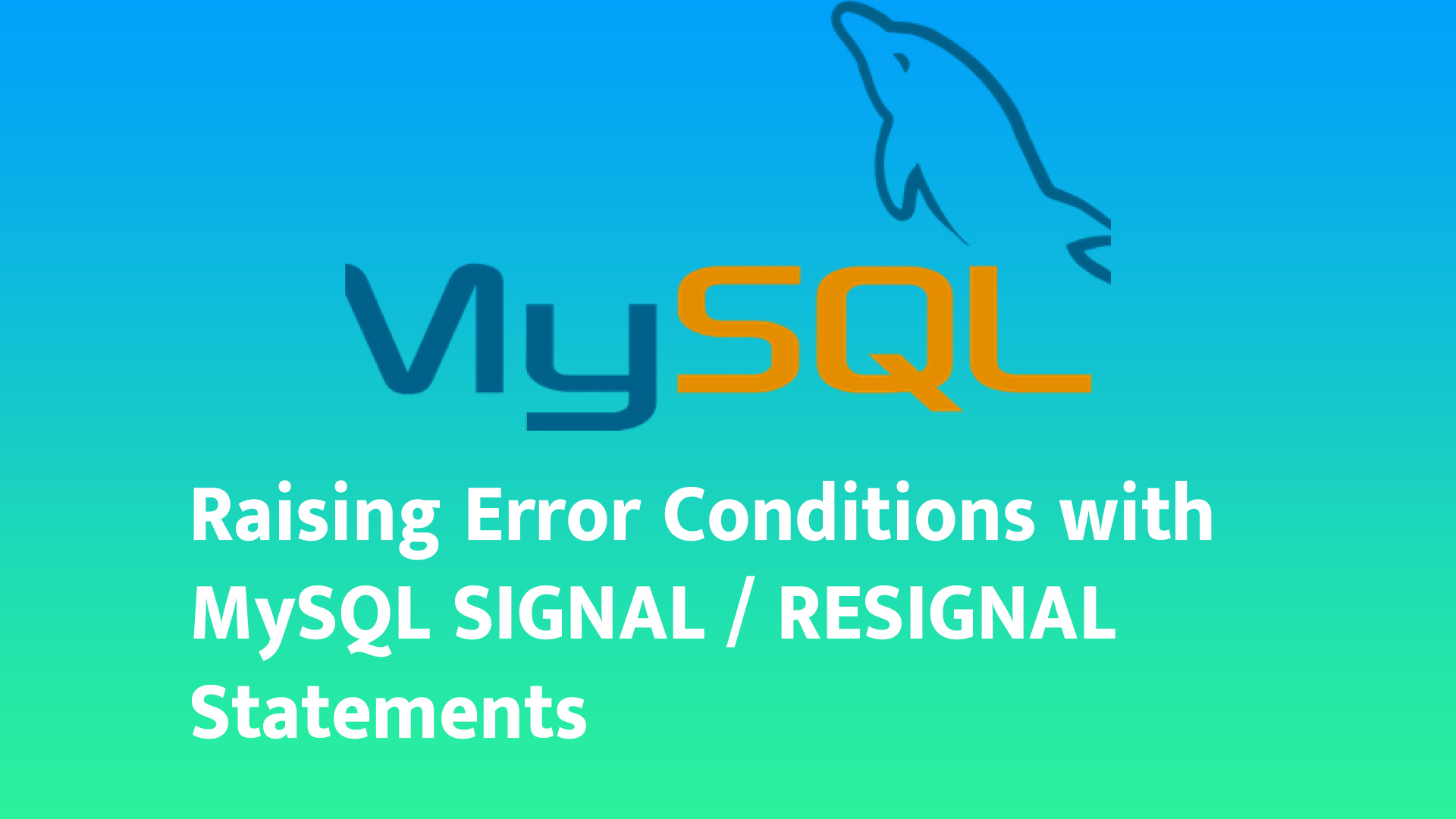Raising Error Conditions with MySQL SIGNAL and RESIGNAL Statements
The SIGNAL and RESIGNAL statements in MySQL allow you to explicitly raise error or warning conditions during the execution of stored procedures, triggers, or events. These statements are useful for custom error handling and improving the clarity of database logic by reporting specific error messages or SQLSTATE values.
The SIGNAL Statement
The SIGNAL statement is used to raise an error or warning condition explicitly. It allows you to define custom SQLSTATE codes and error messages.
Syntax
sqlstate_value: A 5-character alphanumeric string that represents a standard or custom SQLSTATE code.- Example:
'45000'is commonly used for generic custom errors.
- Example:
error_property: Specifies additional details about the error.- Common properties:
MESSAGE_TEXT: A descriptive error message.MYSQL_ERRNO: A MySQL error code (optional).CONDITION_IDENTIFIER: A symbolic name for the condition.MESSAGE_LENGTH: Length of the error message (optional).
- Common properties:
Basic Example: Raising a Custom Error
Execution
Output
1644: A MySQL-specific error code forSIGNAL.45000: A custom SQLSTATE value.
The RESIGNAL Statement
The RESIGNAL statement is used to re-raise an existing error condition, optionally modifying its details. It is typically used in error handlers to propagate or customize errors.
Syntax
- When no SQLSTATE or properties are provided,
RESIGNALpropagates the original error unchanged.
Example: Propagating Errors with RESIGNAL
Stored Procedure with Error Handling
Execution
Output
Use Cases for SIGNAL and RESIGNAL
Custom Error Messages:
- Provide meaningful error messages to users or applications.
Validation Rules:
- Enforce specific business rules by raising errors when conditions are not met.
- Example: Prevent inserting invalid data.
Error Propagation:
- Use
RESIGNALto log errors and re-raise them with additional details or context.
- Use
Advanced Examples
1. Input Validation with SIGNAL
Execution
Output
2. Logging and Propagating Errors with RESIGNAL
Execution
Output
3. Custom SQLSTATE in RESIGNAL
Execution
Output
Best Practices for SIGNAL and RESIGNAL
Meaningful Messages:
- Always provide clear and actionable error messages.
Custom SQLSTATE Codes:
- Use
45000for general-purpose custom errors. - Avoid overlapping with standard SQLSTATE codes unless reusing specific conditions intentionally.
- Use
Error Logging:
- Log errors in a dedicated table for debugging and auditing.
Transaction Management:
- Combine
SIGNALandRESIGNALwith transactions (START TRANSACTION,ROLLBACK,COMMIT) to maintain data consistency.
- Combine
Test Thoroughly:
- Simulate various error scenarios to ensure your error-handling logic works as expected.
Conclusion
The SIGNAL and RESIGNAL statements in MySQL are powerful tools for creating robust and user-friendly stored procedures. They enable custom error reporting, validation, and propagation, making database logic more transparent and maintainable. With proper use, you can ensure that your stored procedures handle errors gracefully and provide meaningful feedback.
Let me know if you need further clarification or additional examples!

